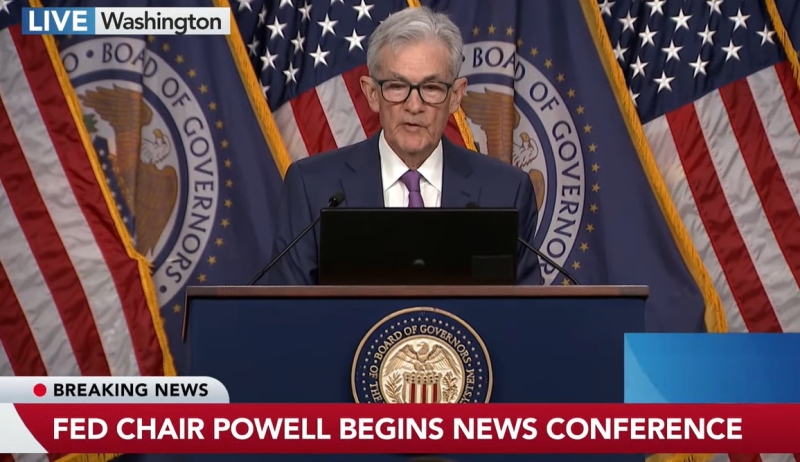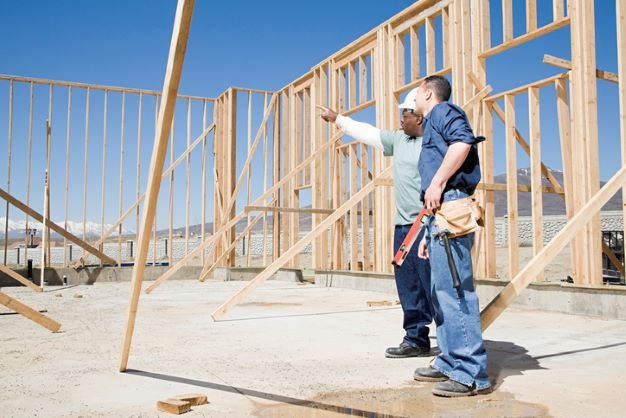
More Questions Than Answers At Housing Finance Climate Summit

Government officials, housing leaders, and climate scientists meet to address climate change's escalating impact on housing.
At an invitation-only gathering of senior government housing officials, industry leaders, insurance experts, climate scientists, economists, investors, and data analysts last week, the prevailing attitude of “urgent but manageable” disguised the lack of quantifiable, actionable solutions for addressing the escalating impacts of climate change on America’s housing and housing finance ecosystem.
Those assembled in National Harbor, Md., at the "Going To Extremes" leadership summit, hosted and organized by Toni Moss, founder and CEO of AmeriCatalyst, a market positioning and business development firm that operates in the housing and finance sectors, noted how the housing industry faces systemic risks ranging from business practices and profitability to capital allocation and strategic planning due to increasingly frequent and increasingly severe extreme weather events now impacting every part of the country.
Panelists cited new and existing research highlighting a “climate bubble” in home valuations, noting how supply constraints have propped up prices despite a worsening insurance crisis. In Florida and California, the nation’s largest housing markets, insurers have gone insolvent, stopped renewing policies, or pulled out of the state altogether. In states across the country, the cost to renew home insurance policies has risen anywhere from 10-40% in the past year.
Asking The Right Questions
While some insurance experts in attendance advocated for deregulation and free market solutions, others voiced an urgent need for public-private partnerships, like federal subsidies or an insurance GSE to house catastrophic risk, arguing more expensive rates only provide short-term relief to a long-term problem. Rate solutions buy time – but can they buy enough time, many asked? More expensive rates also have distributional consequences that shift risk (i.e., cost) onto borrowers, lenders, and the government without directly addressing the fundamental lack of capacity.
Ultimately, creating solutions requires asking the right questions.
“We talk a lot about places with too much water and not enough about places with not enough water,” said Sam Khater, chief economist at Freddie Mac. As affordability has plummeted since the outset of the pandemic in 2020, he has found that more borrowers are moving from high-cost areas into high weather-risk areas, seeking affordable homes but finding higher costs.
Californians have moved in droves from the southern part of the state to the Central Valley, which is both drought-stricken and faces elevated wildfire risk. Coastal Floridians are moving inland, lowering their direct hurricane risk but increasing their wildfire risk. Many people associate climate change with flooding, hurricanes, tornadoes, and wildfires, but hail, drought, extreme heat, and air pollution are increasingly impacting people's decisions about where to move, as well as their quality of life once they move to places where these natural hazards have worsened.
How long will homes hold their value in high-risk areas, which is increasingly more parts of the country? Will the value of mortgage servicing rights (MSRs) be discounted in these high-risk areas? Will lenders who fail to track the 'climate risk' of their lending portfolios face greater repurchase demands? Will Fannie and Freddie's guarantee fees rise because they need greater capital reserves to protect against greater – and still not adequately measured – credit risks? Are borrowers who are getting mortgages today being qualified with adequate reserves to sustain homeownership, given that the costs of mortgages, and ongoing homeownership, are only expected to rise?
Highlighting ongoing efforts at data gathering and emerging "green financing" initiatives, senior housing officials from various government agencies hesitated to acknowledge that even medium-severity climate change scenarios augur profound disruptions to America’s housing and housing finance systems. True, “an ounce of resilience is worth a pound of recovery,” as one official quipped, but only if actionable strategies for resilience exist. The majority of existing initiatives serve the multifamily housing sector, not single-family, owner-occupied real estate and financing.
In Modeled Harm's Way
The lack of any quantifiable, actionable solutions stems in large part from insufficient data and data sharing between counterparties and regulators tasked with understanding the extent of climate change’s unfolding impact and the best mitigation solutions. The novel nature of climate change renders the need for novel solutions, many argued. Yet, the novel nature of climate change makes modeling its unfolding impact that much more difficult. The cone of uncertainty starts wide.
Climate and data scientists noted that as the impacts of climate change worsen, often their historical data and understandings of historical climate trends become less useful. Thus, in back-to-back discussions, scientists hedged new modeling technologies and strategies with disclaimers that all data modeling be taken with a grain of salt. There are places today seemingly not impacted by climate change that could turn out to be unlivable – or uninsurable – 10 years from now.
Even with migration to known high-risk areas from low- to moderate-risk areas doubling since 2020, who might be moving into modeled harm's way remains vexing to predict and even more vexing to communicate and translate into actionable strategies for building awareness and resilience. Some in attendance wondered if they should, let alone could communicate the risk to consumers.
Either way, no one's telling borrowers, "Don't move there." Originators and mortgage lenders occupy a unique, front-line, borrower-facing role in the mortgage industry, responsible for both educating and qualifying borrowers on the costs of homeownership. Yet, only a handful of originators and lenders attended the summit. Moss, the conference's organizer, says many were invited.
Nevertheless, the unmeasured and unpriced risks of climate change are already becoming real costs – and cost burdens – on borrowers’ and homeowners’ budgets. Where climate change has not been directly priced into the fixed costs of mortgages (principal and interest), these costs are actively being indirectly priced into the flexible costs of mortgages through rising insurance, property tax, and utility payments.
Which is to say, many borrowers and homeowners are simply learning about the unpriced costs of climate change on their own. An executive from one data intelligence firm noted that borrowers and homeowners “have no idea what kind of risk they face today.”
In many parts of the country, the ratio of flexible costs to fixed costs in borrowers’ monthly mortgage payments is nearing parity. Meanwhile, more homeowners have reported taking drastic measures to afford their monthly payments, like skipping meals, delaying medical procedures, or dipping into retirement savings.
One conference panelist likened the effects of rising flexible costs of mortgages and homeownership to that of adjustable-rate mortgages (ARMs) in the lead-up to the Great Financial Crisis. Highlighting consumers' lack of awareness, one senior government economist acknowledged a widening “expectation gap” between the costs of buying mortgages and the ongoing costs of homeownership.
The Illusion Of Affordability
This expectation gap is widening despite many of those costs being subsidized through regulatory caps on insurance and property tax increases and down payment assistance programs, which led some panelists to question whether bad loans had already been written during the pandemic-era housing boom of 2020 and 2021.
In 2020 and 2021, trillions of dollars of direct household stimulus, nominal borrowing costs, and enormous quantitative easing by the Federal Reserve created the illusion of affordability as heavy housing demand drove up national median housing prices by roughly 25% over two years. For the millions of borrowers who purchased or refinanced into ultra-low coupons during the pandemic – those locked-in to ostensibly the most-affordable financing – the cost of staying in those cheap mortgages continues to climb without abatement as insurance, property tax, and utility costs skyrocket. These rising costs are being driven as much as two-thirds by the escalating impacts of climate change, one climate scientist in attendance said.
Not only are millions of borrowers locked-in to artificially low financing on artificially high loan amounts – they are now locked-in to whatever unpriced climate risks are folded into those mortgages, now unfolding as the rising cost of staying in those mortgages.
For the foreseeable future, nowhere in the country will it be getting cheaper to buy, own, and maintain a home. The majority of borrowers who bought or refinanced themselves into underpriced mortgages for overpriced homes in high-risk areas cannot afford to move given the current state of the housing market. But, they are increasingly unable to afford to live where they are. As the impacts of climate change worsen, the costs of unpriced risks will continue to emerge from the woodwork of underpriced mortgages – including those written with 2022, 2023, and 2024's more expensive financing costs – undermining borrowers' ability to repay.
With government officials alarmed by failing insurance models, insurance experts blaming bad regulations, lenders sitting on their hands, and servicers monitoring the rapid convergence of rising insurance, utility, and property tax burdens, the question no one at the summit could answer was: who will be left holding the bag as housing's new reality unfolds?




